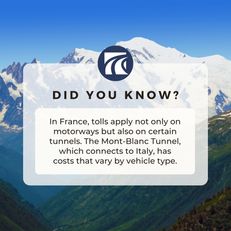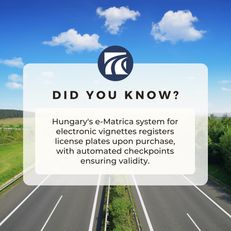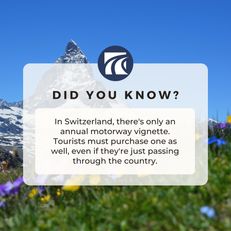Latvia Traffic Guide
On the Road in Latvia
Latvia is particularly known for its stunning coastal landscapes, but it also offers much to see in its interior regions. As the country is not very densely populated, the most interesting places are often far apart. A car is an ideal means to cover these distances.
This guide will provide you with the best tips on how to travel from point A to point B by car in Latvia, what you should keep in mind, and the traffic rules and regulations that apply in this Baltic state.
Latvia Traffic Rules Overview
- In Latvia, the minimum age for driving is 18 years. As Latvia is part of the EU, an EU driver's license is sufficient here.
- Traffic drives on the right side in Latvia, along with all the associated priority rules.
- Within urban areas, the speed limit is 50 km/h. In residential areas, the maximum allowed speed drops to 20 km/h. Outside urban areas and on expressways, the speed limit is 90 km/h, although on some expressways, 100 km/h or 110 km/h may be allowed, as indicated by signs.
- Dipped headlights must be on at all times in Latvia. Additionally, all vehicle occupants must wear seat belts.
- Using a mobile phone while driving is prohibited unless a hands-free device is used.
- Radar detectors are not allowed in Latvia.
- All vehicles must carry a warning triangle, a first aid kit, and high-visibility vests. Vehicles registered in Latvia must also have a fire extinguisher. While a fire extinguisher is not mandatory for foreign cars, it is recommended.
- The legal blood alcohol limit in Latvia is 0.5 per mille. Novice drivers, who have had their driver's license for less than two years, are allowed a maximum of 0.2 per mille.
- Traffic lights in Latvia flash before changing from green to yellow. Once the light is yellow, it is not permitted to proceed.
- Trams, buses, and trolleybuses generally have the right of way in Latvia.
Driving in Latvia
The Roads in Latvia
The road traffic in Latvia is considered relatively safe, and the road network is well-developed.

Given that localities are often far apart and especially rural regions are sparsely populated, you should expect to cover long distances when travelling in Latvia.
Latvian roads are generally in good condition, particularly in cities and tourist regions along the coast.
Even on a regional level, the roads are mostly paved and well-maintained. Only in remote areas, which see little traffic, will you find sections of unpaved roads.
Petrol stations and charging points
Petrol and Diesel: Latvia boasts a comprehensively well-developed network of petrol stations for both petrol and diesel. Along the paved routes, there are numerous petrol stations, many of which are open 24/7 and accept credit cards. The prices for petrol and diesel in Latvia do not significantly differ from the European average.

Electric Cars: Getting around Latvia in an electric vehicle currently presents some challenges. Charging stations can be found in larger cities and along major transit routes, but the charging infrastructure in the country is not yet optimal.
However, electric vehicles are becoming increasingly popular in Latvia, and the coverage of charging options is continuously being improved.
Hydrogen Cars: Currently, there is one hydrogen fuel station in the Latvian capital, Riga. However, since there are no refueling options for hydrogen cars in the neighboring countries, it is still nearly impossible to travel to Latvia in a hydrogen car.
Rental car or own car?
Latvia, being part of the European mainland, is easily accessible by car. As a member of the EU, drivers can often enter without an International Insurance Card, as the EU vehicle registration is usually sufficient proof of liability insurance. However, it is strongly recommended to carry the International Insurance Card, which can be crucial for settling insurance issues in case of an accident with damage.
Rental cars are also available in Latvia, with most rental companies located in Riga and at airports. If you wish to rent a car in another location or during the peak holiday season, it is advisable to reserve it well in advance. When checking the vehicle's equipment, note that cars with Latvian registration must have a fire extinguisher.
To rent a car, you must be at least 21 years old. Drivers under the age of 25 may incur additional fees. Some rental companies offer certain classes of vehicles to drivers as young as 18, but this is relatively rare.
Fines
According to the fine catalog, penalties in Latvia are generally within the following ranges:

- Speeding (20 km/h over the limit): from 20 Euros (approx. £17)
- Seatbelt violation: from 30 Euros (approx. £25)
- Driving under the influence of alcohol: from 430 Euros (approx. £370)
- Running a red light: from 30 Euros (approx. £25)
- Using a mobile phone while driving: 25 Euros (approx. £20)
- Parking violation: from 30 Euros (approx. £25)
Conclusion: Travelling Across Latvia by Car
Using your own car or a rental is an ideal way to travel during your holiday in Latvia, allowing you to explore the entire country and its unique attractions. The infrastructure of Latvian roads enables you to reach your destination safely and comfortably. Refueling is straightforward across Latvia. While the country is not yet perfectly equipped for electromobility, improvements are expected soon.
► Here you can find more information about the toll regulations in Latvia, to be optimally prepared for your trip.






